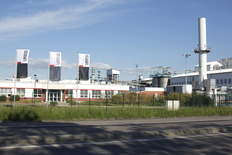
Investment in Port Jérôme Site
Specialty chemicals group LANXESS is investing €30 million in its high-performance rubber production site in Port Jérôme, France, by 2015. This investment aims to enhance productivity and energy efficiency at the facility, which produces neodymium-polybutadiene (Nd-PBR) and solution styrene-butadiene (SSBR) rubbers. These materials are primarily used in the production of "green tires."
Global Strategy and Market Trends
The Port Jérôme site plays a crucial role in LANXESS's global strategy, focusing on sustainable mobility solutions. The company is the global market leader in synthetic high-performance rubber for "green tires," a segment growing at around 10 percent annually. This growth is driven by increasing demand in Asia, Latin America, and Europe, particularly due to the EU tire labeling requirements effective from November 2012.
Production Capacity and Future Plans
The Port Jérôme plant currently has a production capacity of 140,000 metric tons per year. LANXESS is also planning to build a new Nd-PBR rubber plant in Singapore, with an investment of €200 million. This new facility is scheduled to start production in 2015. According to forecasts, global tire production is expected to increase from 1.6 billion to around 2 billion by 2015, representing a 25 percent growth for the industry.
Nd-PBR and SSBR Applications
Nd-PBR is mainly used in the tread and sidewalls of "green tires," offering lower rolling resistance and reduced tire abrasion, enhancing safety and durability. SSBR is primarily used in the tread, reducing rolling resistance and improving wet grip. The best driving characteristics in "green tires" are achieved when both SSBR and Nd-PBR are used.
Historical Context
The Port Jérôme site was established in 1962 by Firestone and acquired by LANXESS in 2004. Since then, LANXESS has invested €30 million in modernizing the plant, which has produced approximately 100 million bales of rubber over its 50-year history.

